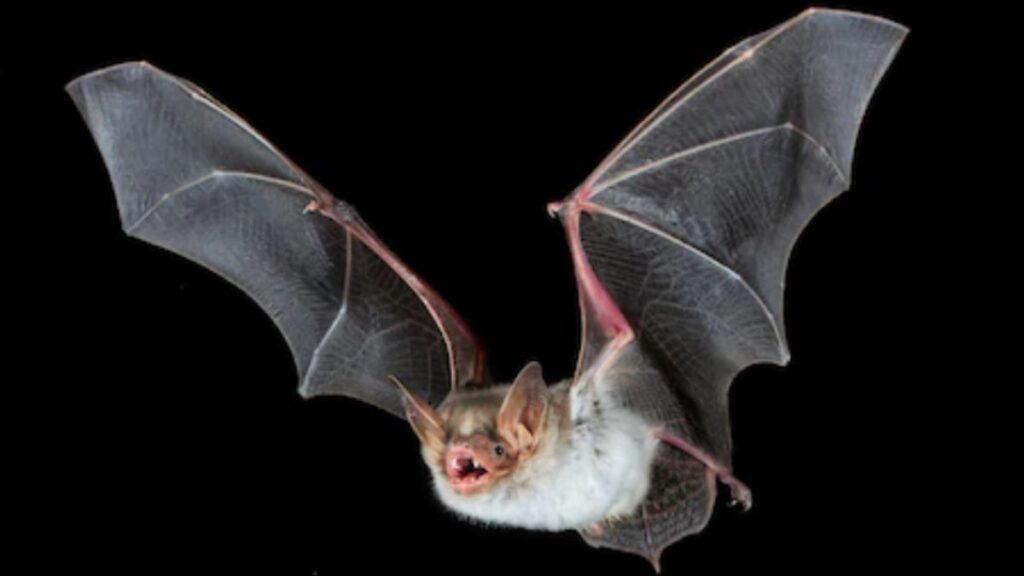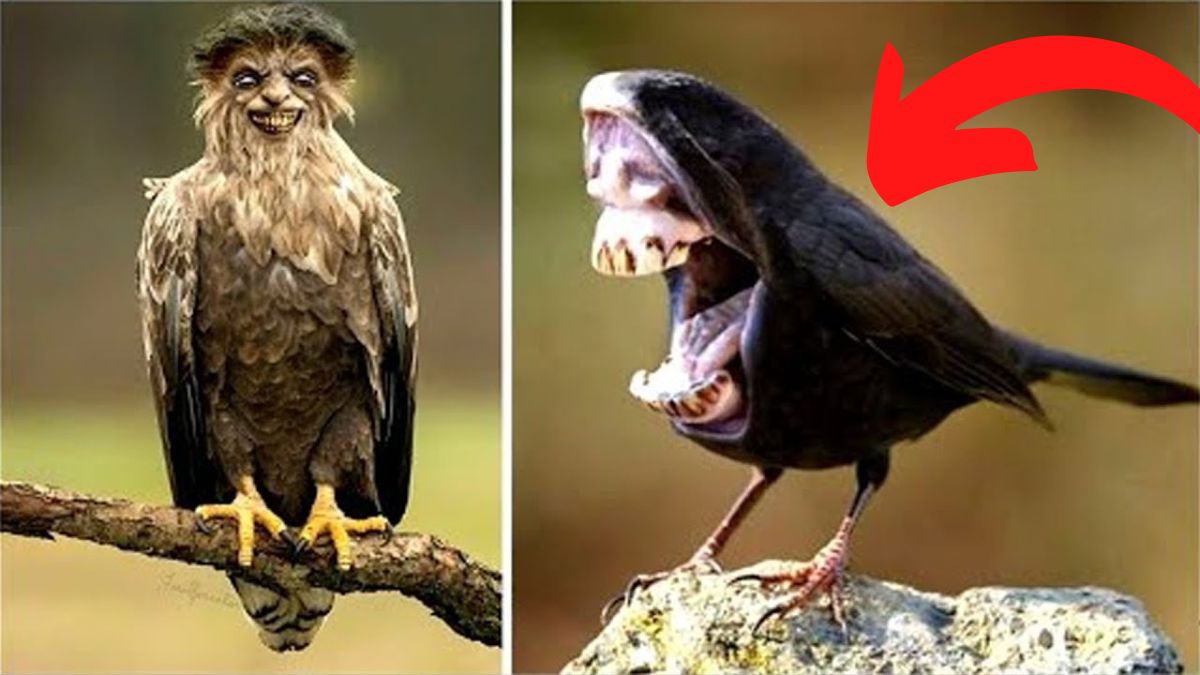
Mouse-eared bats, a type of mammal, have developed a unique adaptation in order to avoid predation by birds. These bats are able to produce sounds that mimic the buzzing of hornets, which can deter birds from attacking them. This is a remarkable adaptation that has not been observed in any other mammal before and is likely the result of natural selection, where individuals that are better able to avoid predation are more likely to survive and reproduce. This adaptation demonstrates the remarkable ways in which animals can adapt to their environments in order to increase their chances of survival.
Mimicry, the act of one species resembling or copying another species, is a common occurrence in the animal kingdom. There are many examples of animals using mimicry as a form of protection from predators. For example, some caterpillars are able to mimic the appearance of venomous snakes, which can deter predators from attacking them. The chicks of the cinereous mourner, a bird found in the Amazon, are able to transform their appearance to resemble poisonous larvae. Hoverflies, which are attracted to flowers, have evolved to look like stinging, unpalatable wasps in order to deter predators. These examples of mimicry are known as Batesian mimicry, in which a relatively harmless species mimics a more dangerous species in order to deter predators.
It is a common occurrence in the animal kingdom, and it is typically visual in nature. This type of mimicry is most commonly found in insects, birds, and reptiles. However, a recent study has observed a type of acoustic mimicry in mammals for the first time. The greater mouse-eared bats, a common European species, were found to imitate the buzzing sound of hornets in an apparent attempt to avoid being preyed upon by owls. This is a unique example of mimicry involving three evolutionarily distant species, and it demonstrates the remarkable ways in which animals can adapt to their environments in order to increase their chances of survival.
What’s the big deal?
Greater mouse-eared bats, a species of bat found throughout Europe, are known for their fondness for insects, particularly beetles. These bats live in colonies and can be found in wooded areas and at the edges of forests. They spend much of the year roosting in caves, but may also use buildings as roosts during the summer. Unfortunately, these bats are often preyed upon by birds such as barn owls and tawny owls, particularly when they are leaving or returning to their roosts.
In 1999, while working to create a call library of echolocation calls for European bats and collecting data on how different bat species communicate with each other, Danilo Russo noticed something unusual. He was extracting a small mouse-eared bat from a mist-net and holding it in his hands when the bat started shivering and emitting a continuous, intense buzz. Russo was surprised by this behavior.
When Russo first heard the continuous, intense buzzing noise coming from the small mouse-eared bat he was holding, his initial thought was that it sounded like a hornet or wasp. The researchers initially believed that this sound was simply a distress call, but the similarity to the sound of an insect led them to consider the possibility that the bats were actually imitating hornets or bees. Russo had previously collected pellets of barn owls at the entrance to a cave where these bats roost and found that the pellets contained a high number of bat skulls, leading him to believe that it was not impossible that these bats may have evolved to use mimicry as a way to deter owls and increase their chances of survival.
Having A Good Time
In their study, Russo and his colleagues compared the buzzing sounds made by the mouse-eared bats to those of four different species of hymenopteran insects, including honeybees and European hornets. They analyzed the sounds based on various characteristics such as wavelength, frequency, and duration, and found that there was a significant overlap in the structure of the sounds. Owls are able to hear a wider range of wavelengths than humans, so the researchers modified the sound parameters to fit what an owl would hear by removing the highest pitches. They found that the bats’ sounds were even more similar to those of buzzing insects to an owl’s ears than to a human’s ears. When certain variables that were undetectable to owls were removed, the similarity between the bat sounds and the insect sounds became even stronger.
In the study, the researchers played back two different insect buzzing sounds through speakers to captive and wild barn owls and tawny owls. One sound was a recording of a bat buzzing, and the other was a bat’s social call. When the owls heard the recorded bat sounds, they moved closer to the source of the sound, but seemed to be confused or startled by it. They tried to escape or distance themselves from the speaker or at least inspect what was happening.
During the experiment, wild owls, which may have had previous experiences with being stung by insects, reacted more fearfully and were more likely to try to escape compared to captive-raised owls, who had not had any encounters with stinging insects. Russo and his team speculate that this difference in behavior may be due to the lack of previous negative experiences with stinging insects in the captive-raised owls. However, there is currently limited scientific data available on how frequently owls encounter and are stung by bees, hornets, and wasps in their natural environments.
According to Russo, when owls encounter the buzzing sounds made by the mouse-eared bats, they recognize that it could potentially be a dangerous situation. This is why Russo believes that the bats use this type of Batesian mimicry as a technique to deter predators and buy themselves time to escape when they have been captured.
Inquiries in the Future
There are several questions that remain to be answered following the publication of this study. In order to confirm that this is a true example of Batesian mimicry, future research will need to replicate these findings in the wild using larger numbers of owls. Additionally, it is not yet clear whether the owls are simply scared by the volume of the bats’ buzzing or if there is some other factor at play. Bruce Anderson, an entomology professor at Stellenbosch University in South Africa, who was not involved in the study, suggests that it may be necessary to further investigate whether this is a case of mimicry or if the owls are simply reacting to an unexpected loud noise.
It is also unclear whether owls fear buzzing insects (although data indicate that birds generally avoid nesting in cavity inhabited by such insects).Researchers also have the opportunity to study whether these buzzing sounds are unique to tick insects,or whether other neutral insects can produce them.Accordingto David Pfennig, professor of biology at the University of North Carolina at Chapel Hill,it would also be nice to test whether a stung bird reacts more with fear than a stung bird,who was not involved in the study.
Although imitation is common and some Bayesian imitation cases are known, many remain mysterious and impressive,says Pfennig. He says this is why findings like this are important.”Batesian imitation provides some of our best examples of how natural selection produces remarkable adaptation, including between very distantly related organism groups,”Pfennig Said.There are other examples of acoustic imitation among different species,such ashowdeep-seabirds can make screams resembling rattlesnakes, but mammalimitation of insectsseems to bethe first true example.
In the future, the researchers involved in this study hope to further refine and expand their research. While it is always important to validate observations made in the field, the results of this study were clear and conclusive. It would be interesting to see if similar strategies are used by other species. There are over 1,400 species of bats, as well as a few non-bat vertebrates that make buzzing sounds when disturbed, so it is possible that other species may use this trick to deter predators. According to Anastasia Helen Dalziell, an ornithology researcher at the University of Wollongong in Australia who was not involved in the study, the use of mimicry to deter predators by animals living in cavities could potentially be widespread.
Most of the knowledge about mimicry that we currently have is based on studies of visual mimicry, but in theory, mimetic signals could be used in any sensory system. It is exciting to have another example of acoustic mimicry, which could help stimulate further research on this topic and encourage a more comprehensive investigation of mimicry in general, according to Anastasia Helen Dalziell, an ornithology researcher at the University of Wollongong in Australia.
Explore:





![Moon Jellyfish has [ Hidden Secrets ] You don't know moon jellyfish](https://spaceupper.com/wp-content/uploads/2022/11/1-1.jpg)

